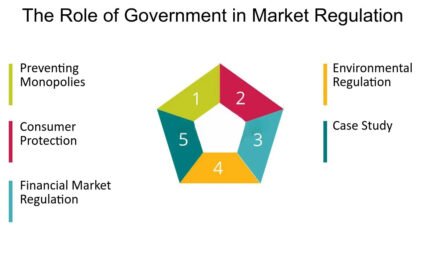Regulations play a critical role in shaping the operations and growth of the electronics and electrical equipment industry. These regulations are designed to ensure product safety, environmental protection, energy efficiency, and fair competition. They also influence innovation, supply chain practices, and consumer behavior. Here’s an overview of how regulations impact the industry:
1. Product Safety and Standards
- Safety Standards: Governments and international organizations establish strict safety standards to ensure that electronic and electrical products do not pose risks to consumers. Regulations set guidelines for the design, manufacturing, and testing of products like electrical appliances, consumer electronics, and industrial equipment. For example, regulations such as CE Marking in Europe or UL (Underwriters Laboratories) certification in the U.S. indicate that a product meets specific safety standards.
- Electrical Code Compliance: The industry must adhere to national electrical codes such as the National Electrical Code (NEC) in the U.S. or the IEC (International Electrotechnical Commission) standards globally. These codes regulate wiring, equipment installation, and the safe use of electricity in buildings and industries, affecting the design and installation of electrical systems.
2. Environmental Regulations
- Waste Management and Recycling: Regulations such as WEEE (Waste Electrical and Electronic Equipment) in Europe and e-waste laws in many countries require manufacturers to recycle and dispose of electronics waste properly. This has led to the development of sustainable disposal practices and the design of products with recyclable components.
- RoHS (Restriction of Hazardous Substances): The European RoHS Directive restricts the use of certain hazardous materials, such as lead, mercury, cadmium, and other toxic substances, in the manufacturing of electronic and electrical equipment. This has driven the industry to develop greener electronics that meet the standards for safe use and disposal.
- Energy Efficiency Regulations: Many countries have implemented energy efficiency regulations to reduce energy consumption in electronics and electrical products. The Energy Star program in the U.S., the EU Energy Label, and the International Energy Efficiency Standards mandate energy-saving designs for products like appliances, lighting, and HVAC systems. These regulations push companies to innovate in low-power consumption technologies and eco-friendly designs.
3. Product Quality and Performance Regulations
- Quality Control and Certification: Many countries have established regulations to ensure that electronics and electrical products meet specific quality and performance standards. For example, ISO certifications (e.g., ISO 9001 for quality management) and ISO 14001 for environmental management are crucial for maintaining product quality and competitiveness in global markets.
- Consumer Protection Laws: Regulations on warranty periods, defect liability, and product recalls are designed to protect consumers. In cases of faulty or dangerous products, manufacturers may be required to conduct product recalls or provide compensation to consumers, which influences manufacturing practices and product design to ensure long-term reliability and safety.
4. Intellectual Property and Patent Laws
- Patent Protection: Patent laws play a significant role in protecting innovations in the electronics and electrical equipment sector. These laws incentivize innovation by granting exclusive rights to inventors for their new technologies, ensuring that companies can capitalize on their research and development (R&D) investments.
- Copyright and Trademark Protection: Trademarks and copyrights also safeguard the branding and designs of electronic products. This encourages fair competition and helps companies maintain a distinct market presence by protecting their intellectual property (IP) from counterfeiting or infringement.
5. Trade and Tariff Regulations
- Import/Export Regulations: International trade regulations and tariffs significantly affect the global supply chain of the electronics and electrical equipment industry. Tariffs on raw materials, components, and finished products can influence production costs and pricing. For example, the U.S.-China trade war led to tariffs on electronic goods, impacting the price and availability of certain products.
- Customs and Standards Compliance: Countries impose varying regulatory requirements for the importation and exportation of electrical equipment, such as customs clearances, product certifications, and inspection. These regulations affect how companies manage their supply chains and distribution networks across borders.
6. Labor and Employment Laws
- Worker Safety Regulations: The industry is subject to labor laws and regulations that ensure the safety of employees working in manufacturing facilities, especially in high-risk areas like assembly lines and electronics testing. The Occupational Safety and Health Administration (OSHA) in the U.S., for example, sets standards for workplace safety in electronics manufacturing, influencing operational practices and facility design.
- Labor Standards: Labor laws, including those concerning working hours, minimum wage, and fair wages, also affect the cost structure of manufacturing and assembly operations, particularly in countries with low-wage labor forces. The adoption of fair trade practices and ethical sourcing is increasingly important for companies concerned with meeting social responsibility standards.
7. Technology and Cybersecurity Regulations
- Data Privacy and Security: As electronics become more interconnected (e.g., IoT devices, smart homes, wearable tech), data security and privacy regulations are becoming more critical. The General Data Protection Regulation (GDPR) in the European Union, for instance, mandates strict rules for companies collecting personal data, impacting the development and operation of connected electronics.
- Cybersecurity: Manufacturers must ensure that their products, especially those with internet connectivity or cloud integration, comply with cybersecurity regulations to protect against data breaches, hacking, and other digital threats. Some countries are adopting regulations to enforce security standards for connected devices, as seen with the Cybersecurity Act in the EU.
8. Environmental Impact and Carbon Emissions
- Carbon Emissions Regulations: Many countries are introducing stricter rules to curb carbon emissions from manufacturing and power usage in the electronics sector. Regulations such as the EU Emissions Trading System (ETS) and various national laws are pushing companies to adopt cleaner energy sources and reduce their carbon footprint during production and distribution.
- Sustainable Sourcing: As part of the growing demand for sustainability, governments are introducing regulations requiring companies to source materials responsibly. This includes conflict-free minerals, responsible mining practices, and sustainable raw material sourcing in the production of electronics.
9. Innovative Product Regulations (e.g., Electric Vehicles)
- Electric Vehicle (EV) Standards: The rise in demand for electric vehicles and EV charging stations has led to new standards for battery safety, charging infrastructure, and vehicle performance. These standards are set by regulators to ensure safe, reliable, and efficient EV products, shaping the electric vehicle ecosystem and its relationship with the broader electrical equipment industry.
- Smart Grid and Smart Meter Regulations: The development of smart grids and smart meters for energy management is another area where regulatory frameworks are influencing innovation. Governments are setting standards for the interoperability, data exchange, and security of these systems, which directly impact how the electrical equipment industry develops related technologies.
10. Impact on Innovation and R&D
- Regulatory Incentives for Green Innovation: Governments worldwide are incentivizing the development of green technologies through tax credits, subsidies, and grants for companies investing in renewable energy or energy-efficient products. These regulations encourage the industry to focus on eco-friendly solutions and adopt cleaner manufacturing processes.
- Innovation in Compliance: Regulatory requirements often drive innovation by challenging manufacturers to develop new technologies that comply with evolving standards. For example, stricter environmental standards may push the industry to design more efficient batteries or recyclable components.
Conclusion
Regulations significantly affect the electronics and electrical equipment industry by ensuring product safety, encouraging environmental sustainability, promoting energy efficiency, and fostering fair competition. They also shape the industry’s approach to innovation, supply chains, and consumer relations. Compliance with regulations is a critical factor for companies to maintain competitiveness and meet market demands, particularly as the industry navigates evolving technologies and global sustainability efforts.
Hashtags
#SustainableTech #EcoFriendlyElectronics #GreenRegulations #TechForSustainability #CircularEconomy #EnvironmentalCompliance #EnergyEfficiencyStandards #EnergyEfficiency #EnergyStar #GreenTechStandards #LowPowerDevices #EnergyEfficientProducts #EnergyRegulations #RoHSCompliance #WEEEDirective #EWasteManagement #HazardousSubstances #TechRecycling #SustainableElectronics #TechSafety #ProductSafety #SafetyStandards #CertificationCompliance #ConsumerSafety #ElectricalSafety #DataPrivacy #CyberSecurityRegulations #GDPRCompliance #TechSecurity #SecureTech #PrivacyLaws #ProductCompliance #TechQualityControl #ManufacturingStandards #TechCertification #ComplianceTesting #QualityAssurance #TradeRegulations #TechTariffs #ElectronicsImports














